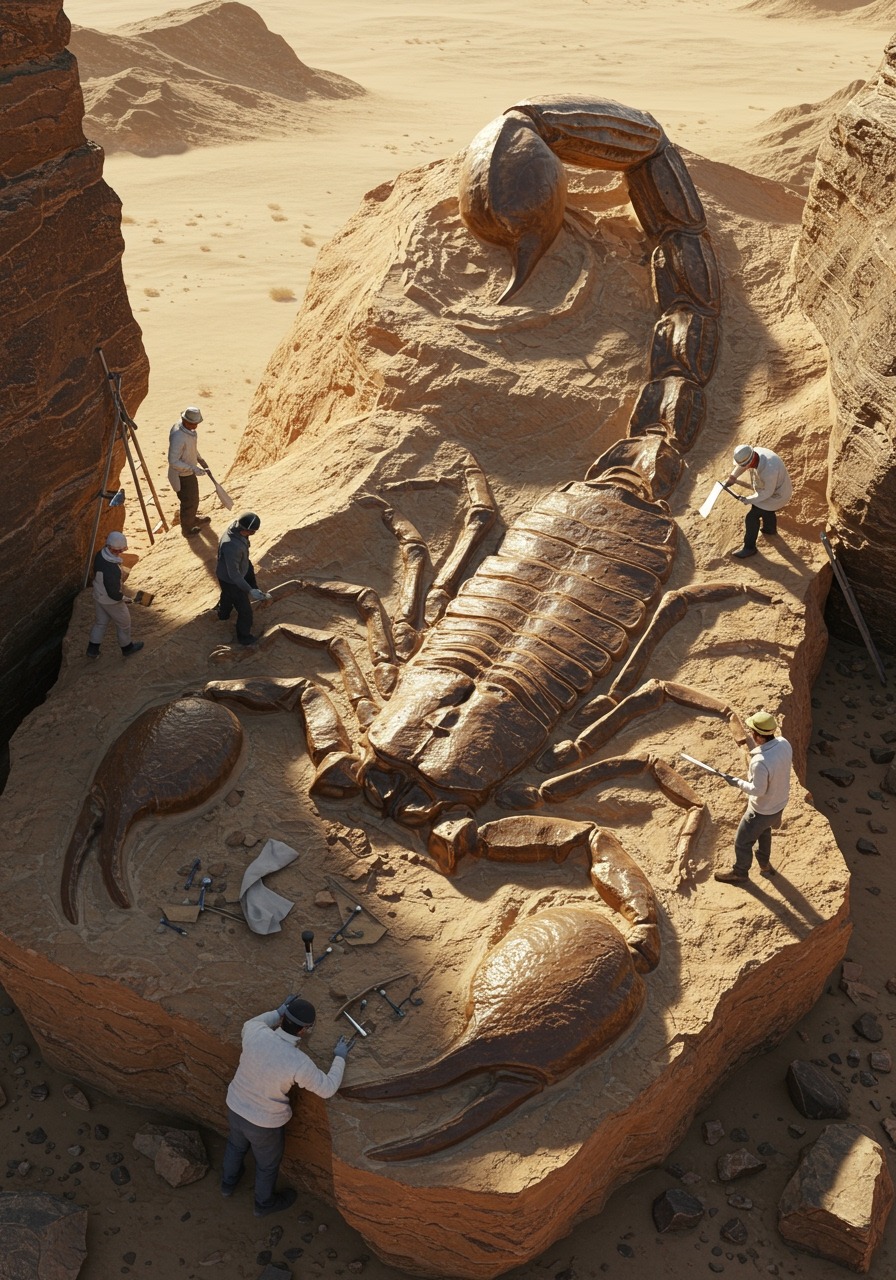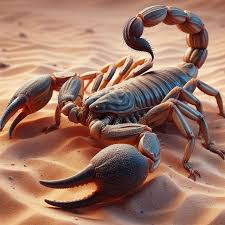ARACHNID ANOMALY: GIANT SCORPION FOSSIL UNEARTHED IN DESERT SANDS

ARACHNID ANOMALY: GIANT SCORPION FOSSIL UNEARTHED IN DESERT SANDS
A monumental paleontological discovery is rewriting the history of ancient arachnids, delivering an ARACHNID ANOMALY from the Cretaceous period. Paleontologists have uncovered the extraordinarily rare fossil of a GIANT SCORPION FOSSIL UNEARTHED IN DESERT SANDS of what is now China’s Jehol Biota. Belonging to a newly named species, Jeholia longchengi, this terrestrial predator, measuring around 4 inches (10 cm) long, was a colossal figure for its time, dramatically larger than most of its Mesozoic-era contemporaries.

Prehistoric Predator of the Cretaceous Desert
Dating back approximately 125 million years, this giant scorpion fossil provides a crucial, and extremely rare, glimpse into a terrestrial ecosystem where dinosaurs roamed. Unlike most scorpion fossils from this period, which are tiny and preserved in amber, Jeholia longchengi was found preserved in sedimentary rock—an exceptional stroke of luck that highlights its size and significance. Its unique features, including long legs and slender pincers, suggest a predatory style distinct from modern scorpions, establishing it as a key mid-level carnivore in the complex food web of the ancient desert landscape.

Unlocking the Secrets of Ancient Arthropods
The discovery of this prehistoric MEGABEAST MARVEL is invaluable to researchers studying the evolutionary history of scorpions, a group that has existed for over 400 million years. Its massive size and excellent preservation challenge previous assumptions about the scale of arachnids during the Cretaceous and their ecological role alongside early dinosaurs and mammals. Scientists are now analyzing the fossil’s morphology and its placement in the food chain, using this extraordinary find to unlock new details about how terrestrial arthropods adapted and thrived in the diverse, and often hostile, ancient world.











